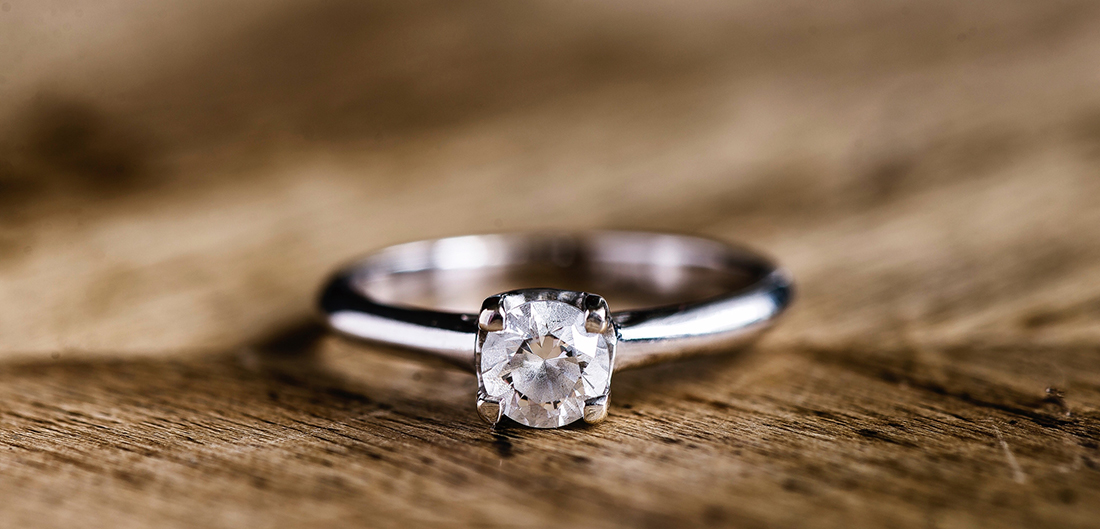 An engagement ring is one of the most prized pieces of jewelry in a person’s life. That’s because it represents a couple’s decision to get married and build a life together.
An engagement ring is one of the most prized pieces of jewelry in a person’s life. That’s because it represents a couple’s decision to get married and build a life together.
However, it’s also one of the most prized pieces of jewelry because of how much it costs. And, unfortunately, accidents happen. Rings have been known to get washed away down the kitchen sink while people are doing dishes. They’ve also been known to slide off while people are crashing into waves at the beach. Any other number of things can happen to an engagement ring (from getting stolen by a thief to getting eaten by the family pet!).
To help secure your investment, Erie Insurance has personal valuables insurance, which is designed to protect those unique, expensive, hard-to-replace items like an engagement ring.
Here are some common questions about covering an engagement ring:
4 Common Questions About Engagement Ring Insurance
Is my engagement ring covered under my homeowners or renters insurance?
The answer to this question depends on how much the ring is worth. Typically, homeowners and renters insurance will only cover theft of jewelry up to a specific dollar amount. For ERIE, that limit is $3,000.
Most people’s engagement rings, though, are worth more than $3,000. The average cost of a new engagement ring is $6,351 according to The Knot’s 2017 Real Weddings study.
Considering that homeowners and renters insurance don’t cover engagement rings completely most of the time, it may be a good idea to get insurance for your engagement ring on its own. If you decide to do that, you can either choose to insure the ring based on its cost or based on its appraised value.
How expensive would it be to insure an engagement ring?
Ring insurance, on average, costs $1-2 a year for every $100 the ring is worth. For example, if you insured a ring that was $6,000, your ring insurance would cost you $60-120 annually.
With ERIE, there are options for how you want to pay your ring insurance. You can pay less monthly by choosing to have a deductible. A deductible is the amount of money you’d pay out of pocket for an insured loss. The higher the deductible you choose, the less you have to pay monthly. You could also choose not to pay a deductible at all, but then you’ll have to pay more each month. What you decide to do depends on your personal preference and financial situation.
Do I need to get my ring appraised?
You should always keep your receipts, from the initial purchase of the ring to each appraisal you do on it. This information will let you know how much you need to insure your ring for. It will also let you know unique qualities about your ring that can be used as identifiers if your ring were to ever get lost or stolen. Appraisals check out things like the ring’s stone shape and quality, metal type and fineness, identifying marks, etc.
In most cases, if your ring is less than $7,000 and/or no more than seven years old, you don’t need to get it appraised.
Once it does hit that seven-year mark, however, be sure appraise it and reappraise it every so often. This is because jewelry (especially diamonds) appreciates over time. With the value of your ring increasing, it would be wise to see what it’s worth periodically so you know you’re insuring it at the right amount.
Do I have to clean or inspect my ring?
Usually, people are making insurance claims on their rings because they either lost the ring itself or the stone on the ring – not because someone stole it. This can be prevented just by having your ring cleaned and inspected. A jewelry expert will notice if the prongs holding the stone are getting loose, and they can fix small problems with the ring before they become big problems.
If you would like to know more about personal valuables insurance, contact one of our professionals at Assure America. We have locations in: Weirton, Wellsburg and Chester in West Virginia; Steubenville, Ohio; Louisville, Kentucky; and Pittsburgh, Pennsylvania.



Post Your Comment